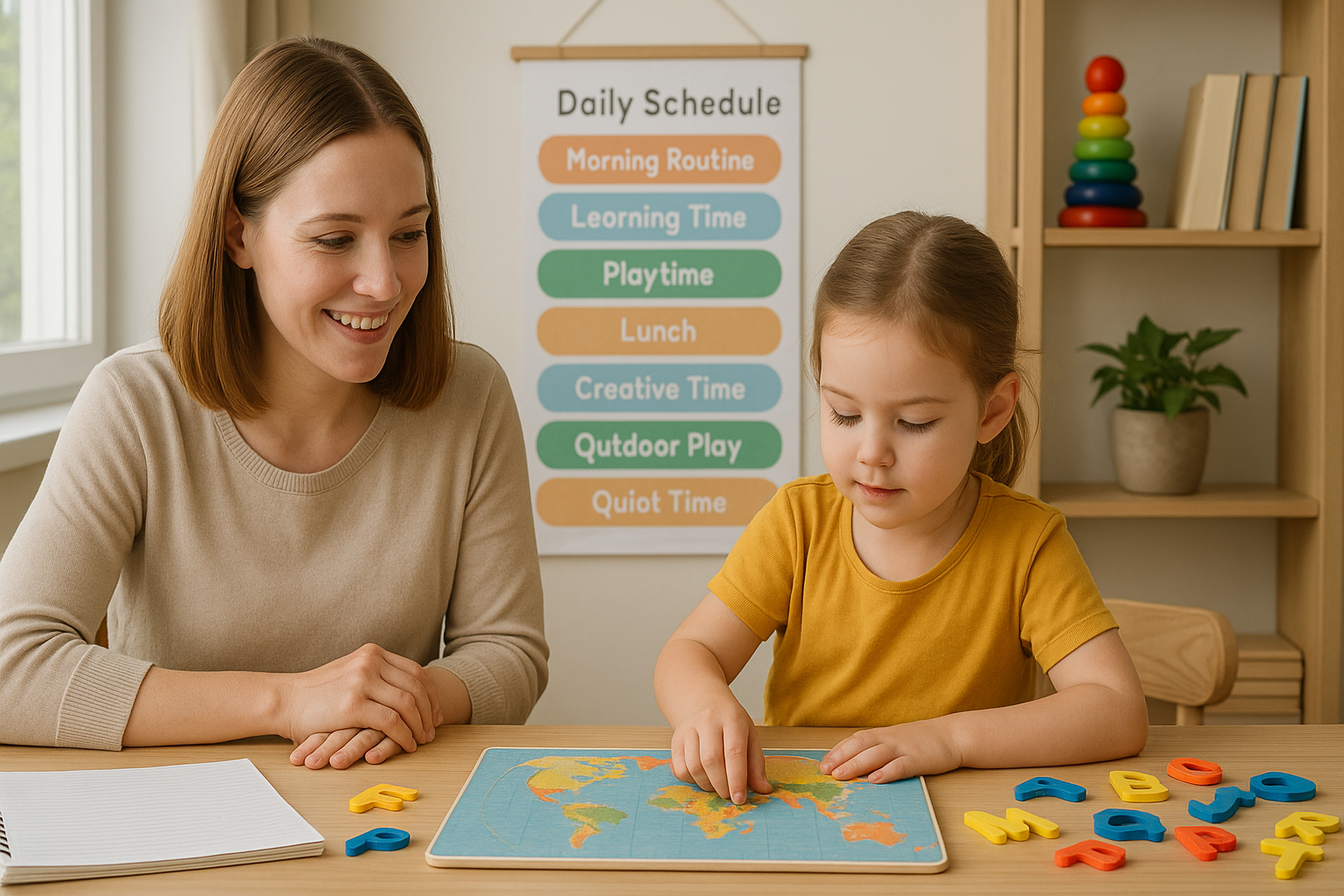Establishing a consistent daily routine is one of the most powerful tools parents can use to support early childhood development at home. When children know what to expect each day, they feel secure, confident, and ready to engage in learning. Creating a daily learning routine doesn’t require a rigid schedule, but rather a balanced flow of activities that encourage curiosity, creativity, and skill-building.
Why Routine Matters in Early Childhood
Young children thrive on structure. A predictable routine helps:
- Reduce anxiety and tantrums
- Foster independence
- Improve sleep and behavior
- Build essential executive function skills
- Create a balanced environment for learning and play
With a flexible but dependable routine, parents can make learning part of everyday life without overwhelming the child.
Key Elements of a Productive Daily Routine
Every family’s schedule is different, but a solid routine for preschool-aged children typically includes:
- Morning Start-Up
- Focused Learning Time
- Free Play and Exploration
- Creative Expression
- Outdoor Movement
- Quiet or Rest Time
- Story Time and Wind-Down
Let’s look at how you can structure each of these elements at home.
1. Morning Start-Up (7:30–8:30 AM)
Begin the day with a predictable pattern: wake-up, bathroom, brush teeth, and breakfast. Use this time to:
- Sing a morning song
- Look at the calendar and weather
- Talk about the day’s plan
Children feel more cooperative when they’re gently included in what’s coming next.
2. Focused Learning Time (9:00–10:30 AM)
Use this part of the day for educational activities when attention spans are highest.
- Alphabet practice
- Number recognition and counting
- Shape and color games
- Fine motor skills (cutting, tracing, threading beads)
Keep sessions short—15 to 20 minutes per activity. Alternate between table work and movement-based learning to avoid restlessness.
3. Free Play and Exploration (10:30–11:30 AM)
Free play is just as important as structured time. Allow your child to choose what to explore.
Ideas include:
- Building with blocks
- Pretend play
- Sensory bins
- Water or sand play
This encourages independence, imagination, and social-emotional growth.
4. Creative Expression (1:00–2:00 PM)
After lunch and a short rest, engage in activities that allow your child to express themselves.
Options include:
- Drawing or painting
- Music and dance
- Play dough and clay
- Simple crafts with paper and glue
Provide a quiet and inspiring space, with access to safe materials they can use freely.
5. Outdoor Movement (2:30–3:30 PM)
Physical activity is crucial. Try to get outside daily—weather permitting.
Ideas for movement:
- Running, jumping, climbing
- Riding tricycles
- Nature walks
- Throwing and catching games
Being outdoors supports both physical and mental health, and offers endless learning opportunities about the world.
6. Quiet or Rest Time (3:30–4:30 PM)
Even if your child no longer naps, build in a calm time during the afternoon.
Suggestions:
- Look at picture books
- Listen to relaxing music or stories
- Puzzles or quiet toys
This helps children decompress and prevents late-afternoon meltdowns.
7. Story Time and Wind-Down (6:30–7:30 PM)
Reading before bedtime is not only soothing—it’s one of the best ways to build language skills.
Tips:
- Let your child pick the books
- Ask open-ended questions while reading
- Connect the story to your child’s experiences
Keep the tone calm and loving to prepare for a peaceful transition to sleep.
Making the Routine Stick
To ensure the routine works:
- Be consistent, but flexible
- Use visual schedules with images
- Give choices when possible (e.g., “Do you want to paint or draw?”)
- Keep transitions smooth (e.g., use songs or timers to indicate change)
- Adjust based on your child’s natural energy patterns
Don’t aim for perfection—some days will go smoothly, others won’t. What matters is the overall rhythm and predictability.
Empowering Children Through Routine
Children are not only learning letters and numbers at this age—they’re learning how the world works, how to organize their time, and how to regulate their emotions. A daily learning routine at home gives them a safe, structured environment where these skills can grow.
Parents don’t need to be teachers—they just need to be present, encouraging, and consistent. When the home becomes a reliable space for growth, the child’s confidence and curiosity will flourish.
